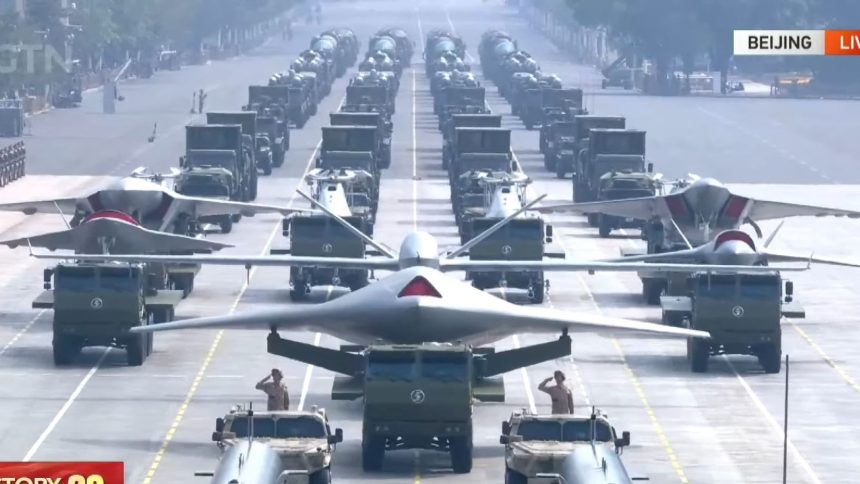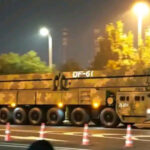At Beijing’s grand Victory Day Parade on September 3, 2025—marking the 80th anniversary of the end of WWII—China pulled back the curtain on a new generation of Unmanned Combat Aerial Vehicles (UCAVs). These drone platforms ranged from enhanced ISR/strike variants to full‑blown unmanned air superiority fighters, demonstrating China’s rapid push into autonomous aerial warfare.

New UCAV Designs Unveiled
Ahead of the parade, satellite and grainy footage hinted at forthcoming UCAV models. The parade, however, offered clear visuals of at least four new drone types:
GJ‑11 “Sharp Sword” – A known stealth UCAV, leading the formation and now reaffirmed as an operational platform.
Wing Loong–style ISR/strike drone – A familiar design often deployed in surveillance and light-strike roles.
Type A UCAV (Tailless, Lambda Wing) – A sleek design with lambda wings and side fuselage air intakes, more slender and notably less complex sensor fit than its counterparts.
Type B UCAV (“Unmanned Air Superiority Fighter”) – A striking, diamond-wing, tailless aircraft equipped with electro-optical targeting system (EOTS) fairing and stealth engine nozzle features. Its scale rivals a J‑10 fighter, hinting at high-speed or supersonic capability.
The parade announcer described these additions broadly as reconnaissance and strike drones, unmanned wing planes, unmanned air domination planes, and unmanned carrier-borne helicopters—suggesting a wider push into Collaborative Combat Aircraft (CCA) doctrine.
Serial numbers on Type A/B suggest they are tied to actual PLAAF operational units, not mere mockups—indicating China is serious about integrating these designs into its air fleet.
Strategic Implications
Stealth & Autonomy: The Type B’s stealthy lines, avionics facings, and internal weapon bays signal China’s intent to field manoeuvre-heavy, low-observable UCAVs capable of supersonic air dominance.
CCA Doctrine: These drones likely form part of a broader CCA strategy, where unmanned wingmen accompany manned platforms for ISR, EW, or strike missions.
Rapid Induction: The level of detail suggests many may be flight-capable at parade time, reinforcing China’s pattern of showcasing near-ready systems during grand military events.
Conclusion
By revealing these UCAVs, China has signaled a strategic pivot: drones are no longer auxiliary systems, but core elements of future air force architecture. The emergence of Type A and B UCAVs alongside GJ-11 confirms China’s commitment to developing high-performance, autonomous air combat systems.
This launch demonstrates a covert acceleration toward autonomous, stealthy, and potentially supersonic UCAVs. As these platforms transition from parade stage to deployment, they will redefine the operational calculus for both regional airspace and great power competition.









